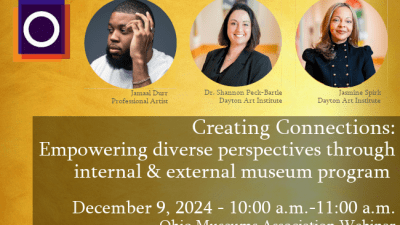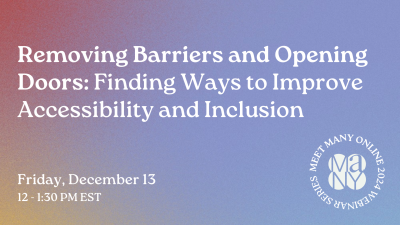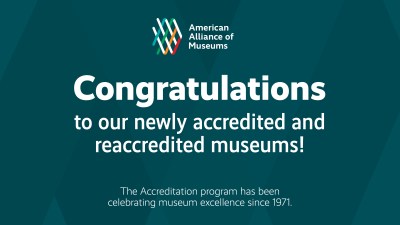This article originally appeared in Museum magazine’s March/April 2024 issue, a benefit of AAM membership.
While you may know me as the editor in chief of this magazine, I have another professional identity that is equally dear to me: museum volunteer. For decades now, even longer than the 30 years I recently celebrated at AAM, I have proudly worn this badge.
As it is for many, volunteering was my initial entry into the world of museums, paving the way for a career dedicated to supporting our field’s ambitions and aspirations. I’ve worked across the spectrum of museum staff and leadership in the years since, and the unwavering spirit and invaluable contributions of my fellow volunteers have remained an enduring source of inspiration. That’s why I am honored to introduce you to this issue of the magazine dedicated to the topic of volunteerism.
In diverse capacities, such as gallery guides, informational guides, and public programming support, volunteers often serve as museum ambassadors, the first point of contact to address visitors’ questions, interests, and needs. In the process, they bridge the institution to the community, helping the public access the resources it needs to flourish. They are motivated to do this work for myriad reasons, including a passion for the museum and its subject matter, a wish for social connection, and a desire to give back. Even as volunteering has evolved over the years—increasingly accommodating diverse schedules, skill sets, and digital platforms—these timeless values have remained at the core.
Volunteer managers play a critical role as the architects of this engagement. By adapting to the shifting landscape of contemporary volunteer needs, they craft environments that continue to nurture a sense of purpose and impact while helping their museums attract and retain a diverse and skilled volunteer base. In doing so, they enhance the museum’s overall effectiveness and sustainability, fostering a sense of community, strengthening organizational resilience, and optimizing resource utilization. In some cases, the positive image this generates can attract greater support from donors, partners, and the next generation of museum volunteers.
However, as you will learn in these pages, volunteerism in museums is not without its hurdles. Volunteer managers today face challenges in areas such as recruitment, retention, diversity, and inclusion, leading to questions about the long-term sustainability of their programs. Furthermore, amid a movement to reexamine museum cultures and labor practices, some question whether traditional volunteer structures are compatible with equitable and inclusive values. Many museums are scrutinizing their programs for both sustainability and diversity, revisiting the ways they can best attract, deploy, and support volunteers.
This moment presents exciting opportunities for innovation and collaboration. Embracing change, nurturing a sense of community, and consistently aligning with the core values of purpose and social impact, museums can catalyze a new era of volunteerism—one that transcends boundaries and fosters enduring connections between volunteers, visitors, communities, and the museums that enrich their lives. Together, volunteers and museums can shape a future where the spirit of service and the preservation of culture converge for the betterment of society.
Let’s give our volunteers a rousing round of applause this year during National Volunteer Week, April 21–27!








Comments